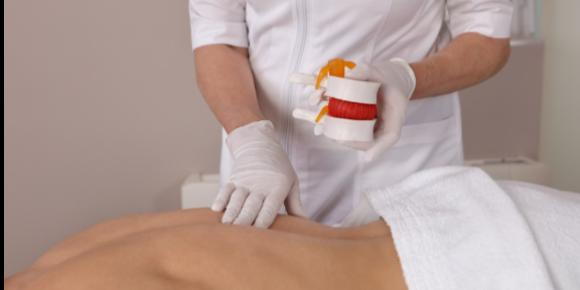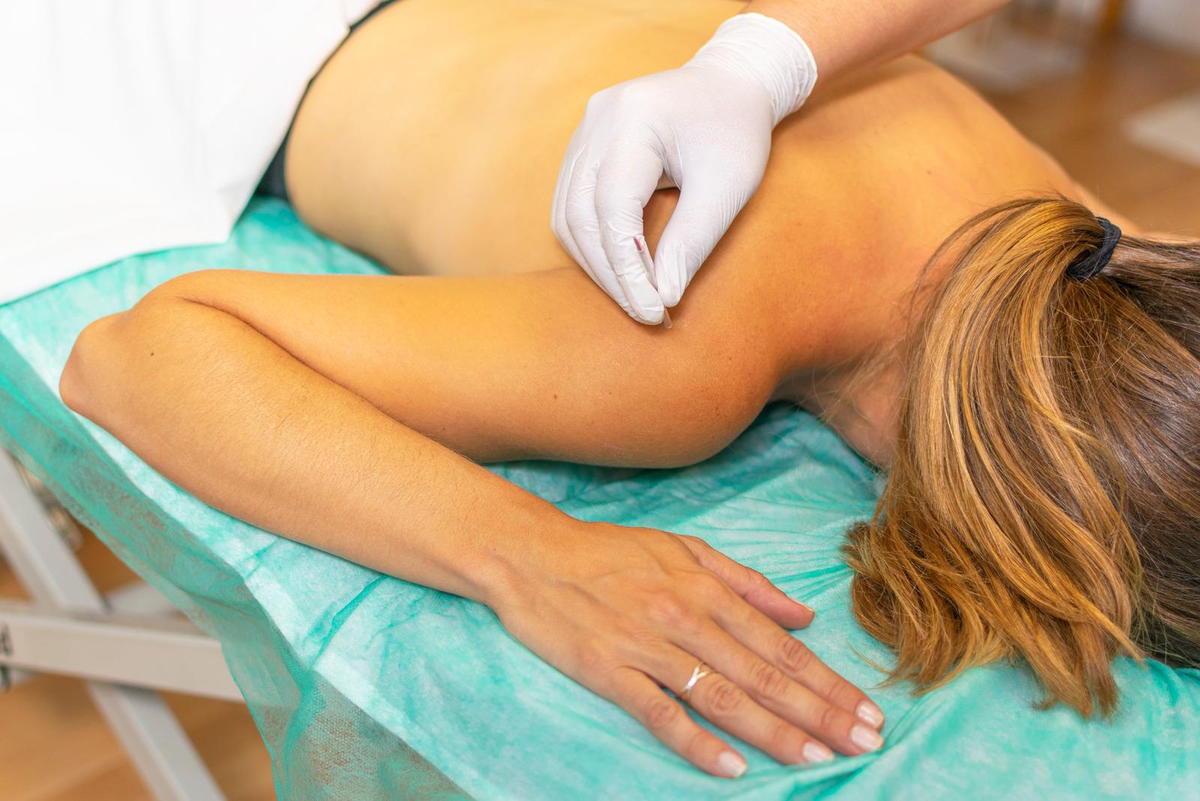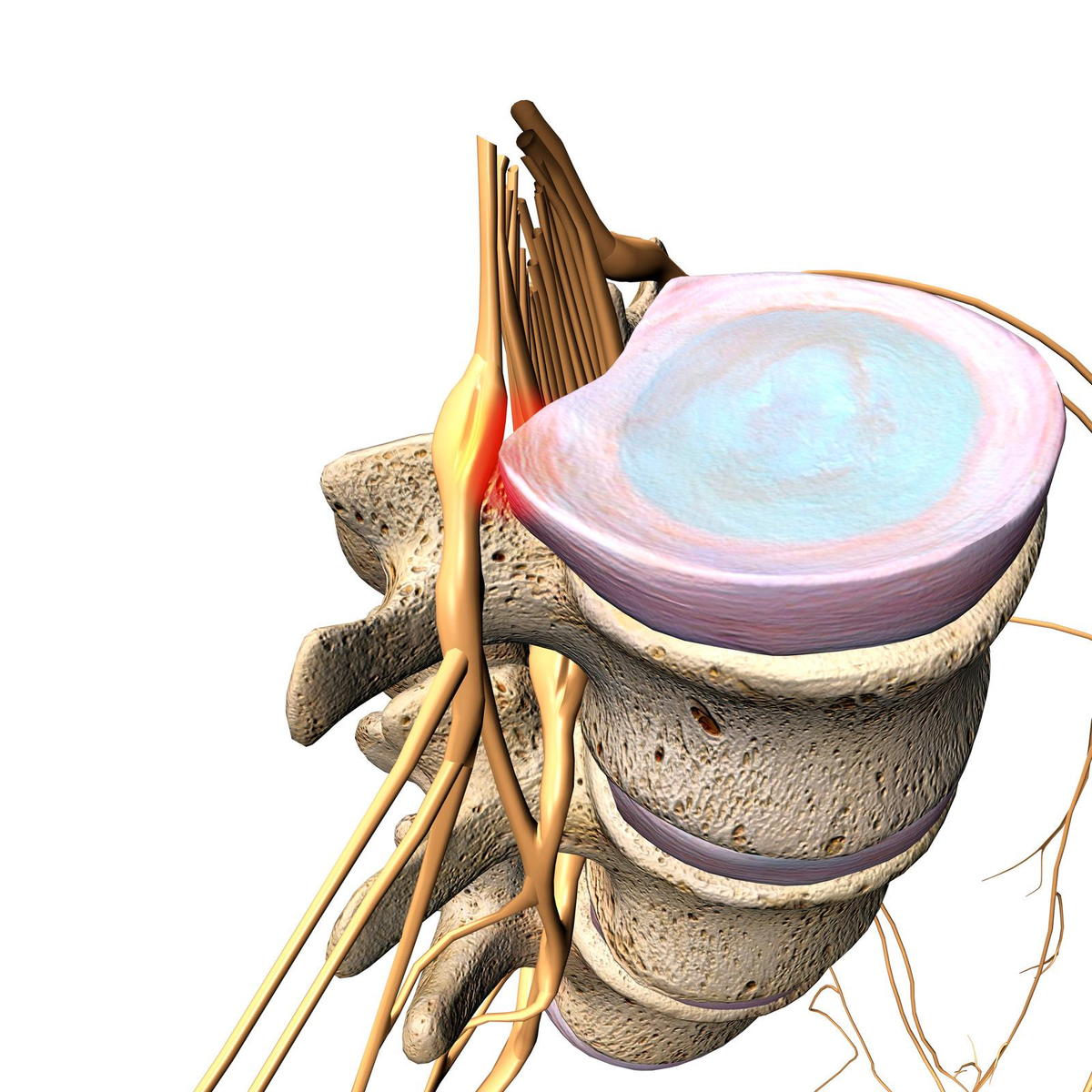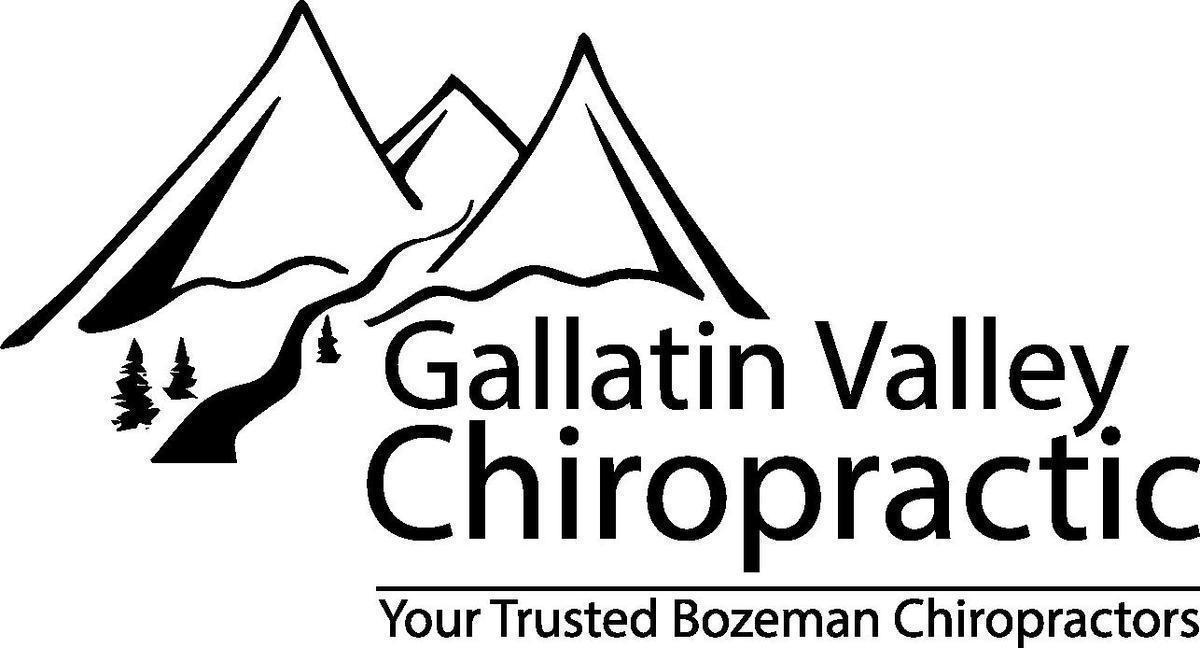Dry Needling for Disc Injury- Bozeman Montana Chiropractors
posted: Mar. 07, 2022.

Dry Needling for Disc Herniation
Dry needling or 'trigger point therapy', is a myofascial technique that involves the application of a small filament needle into the effected areas. Dry needling got it's name 'dry' because there is nothing being injected when dry needling is performed. The clinician will determine where to dry needle by patient symptoms of pain and/or dysfunction as well as palpation for any inflammation present, or changes in tissue texture such as feeling ropey, stringy or tight.
What is a Disc Herniation
A disc herniation involves the soft gelatinous core, which is called the nucleus, pushes through the tougher annular fibers. There are different stages of disc herniations ranging from a bulging disc which is the least severe, to a sequestered disc herniation which is when a piece of the nucleus of the disc actually breaks off outside of the annular fibers. Disc herniations can vary on patient symptoms and intensity.
fibers. There are different stages of disc herniations ranging from a bulging disc which is the least severe, to a sequestered disc herniation which is when a piece of the nucleus of the disc actually breaks off outside of the annular fibers. Disc herniations can vary on patient symptoms and intensity.
Symptoms of Disc Injury
Some of the symptoms that come with disc injuries include
- Shooting pain extending into the leg
- Muscle spasming
- Aches and pains
- Muscle weakness and leg numbness
- Movement directional preference
A large contributor to these symptoms is your body's natural inflammatory response to the disc injury. Inflammation will lead to more pressure on the surrounding nerves, resulting in your muscles going into protection mode and spasming, as well as over activation of your peripheral nerves causing shooting pain and muscle weakness.
How to Relieve Inflammation and Symptoms with Dry Needling
Relieving inflammation has recently been found to be a key component of regressing lumbar disc herniations (link here). But, how does dry needling help with relieving inflammation? When dry needling the clinician is able to get the needle all the way to the bone!
- The presence of the needle will enhance blood flow to the area, pushing the old stagnant blood out of the area thus improving circulation, which means improved nutrient flow.
Dry needling also prevents pain causing neurotransmitters and activates what is called the suppression system of the spinal cord, dramatically decreasing pain felt in the area. This is important for pain control because patients can often develop an over sensitivity in the area they are feeling pain, disproportional to the pain causing stimulus. This can make it hard to differentiate how much of the patients symptoms are caused from the injury, and how much is due to the over sensitization. Dry needling de-sensitizes the area, lowering the experienced pain felt by the patient. In a recent study looking at radiating pain from a discogenic injury treated with dry needling, the patients tested showed significant improvements in pain and disability at the end of a two month intervention (link here).
At Gallatin Valley Chiropractic, we have seen tremendous results in pain mitigation and movement quality when dry needling patients for discogenic injuries. We have found that dry needling along with some light mobilization of the low back as well as movement specific exercises, is an excellent conservative method of treatment. Conservative care should be exhausted fully before patients consider surgery. If you or someone you know is battling a disc injury, do your research. If you have any questions or concerns please don't hesitate to reach out to one of our doctors.
Call us at 406-551-2177
Gallatinvalleychiropractic.com
References
Mahmoudzadeh, Ashraf, et al. “The Effect of Dry Needling on the Radiating Pain in Subjects with Discogenic Low-Back Pain: A Randomized Control Trial.” Journal of Research in Medical Sciences : the Official Journal of Isfahan University of Medical Sciences, Medknow Publications & Media Pvt Ltd, 18 Oct. 2016, https://www.ncbi.nlm.nih.gov/pmc/articles/PMC5244646/.
Cunha, Carla, et al. “The Inflammatory Response in the Regression of Lumbar Disc Herniation - Arthritis Research & Therapy.” BioMed Central, BioMed Central, 6 Nov. 2018, https://arthritis-research.biomedcentral.com/articles/10.1186/s13075-018-1743-4#:~:text=Lumbar%20disc%20herniation%20(LDH)%20is,that%20may%20lead%20to%20pain.
